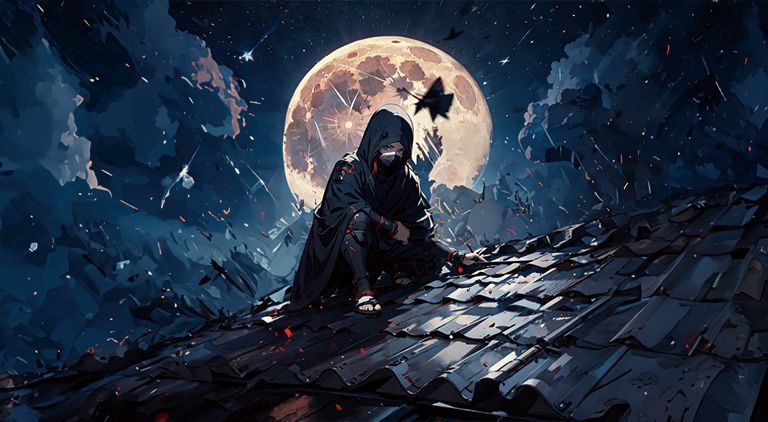Iga-ryū: The Iga School of Ninjutsu
Iga-ryū is one of Japan’s most famous martial arts traditions, known especially for its association with ninjutsu—the art of stealth, espionage, and unconventional warfare. Originating in the Iga region, this school has played an influential role in both historical events and popular culture.
Historical Background
-
Origins:
Iga-ryū developed in the Iga Province (present-day Mie Prefecture), a region whose rugged terrain provided an ideal setting for training in covert operations and guerrilla tactics. -
Role in Feudal Japan:
During the turbulent periods of feudal Japan, practitioners of Iga-ryū—often referred to as “Iga ninjas”—were employed as spies, scouts, and even saboteurs by various feudal lords. Their skills in stealth and unconventional combat made them a valuable asset in warfare. -
The Iga Campaign:
One of the most notable episodes in Iga-ryū history was the conflict with the forces of the powerful warlord Oda Nobunaga during the late 16th century. The resulting Iga Campaign further cemented the reputation of Iga ninjas in Japanese history.
Legendary Figure: Hattori Hanzō
Perhaps the most renowned ninja to emerge from the Iga tradition is Hattori Hanzō. Celebrated in both historical records and popular lore, Hattori Hanzō is famed for his exceptional skills in stealth, strategy, and combat. His exploits—especially his service under Tokugawa Ieyasu—have made him a lasting symbol of the cunning and resourcefulness that defined Iga ninjutsu.
Techniques and Training
-
Ninjutsu Skills:
Training in Iga-ryū focused on a wide range of skills such as:- Stealth and Evasion: Learning to move silently and blend into natural surroundings.
- Espionage: Gathering intelligence and observing enemy movements.
- Unconventional Combat: Using surprise tactics, specialized tools, and weapons to overcome opponents.
-
Philosophy:
Beyond physical techniques, Iga-ryū emphasized mental discipline and adaptability. Practitioners were taught to think quickly and improvise, qualities that remain central to modern interpretations of ninjutsu.
Iga and Koga: Rivalry and Collaboration
Both Iga-ryū and the Koga-ryū are pillars of traditional ninja arts in Japan, each with its own unique legacy:
-
Geographical Roots:
Iga ninjas hailed from the Iga Province (Mie Prefecture), while Koga ninjas originated in the Koga region. The distinct landscapes of these areas influenced their training methods and tactical approaches. -
Complementary Skill Sets:
While both traditions emphasized stealth, espionage, and guerrilla tactics, historical accounts suggest that their friendly rivalry spurred innovation. This competition led to the refinement of techniques, ensuring each school developed unique strengths in covert warfare. -
Cooperation in Conflict:
Despite occasional rivalries, there were instances when feudal lords employed both Iga and Koga ninjas in joint operations. Their combined expertise often provided a significant strategic advantage in intelligence gathering and battlefield maneuvers. -
Shared Cultural Legacy:
Today, the intertwined histories of Iga and Koga ninjas enhance the mystique of Japan’s ninja tradition. Their legacies inspire martial artists and enthusiasts alike, symbolizing the power of adaptability, innovation, and sometimes even collaboration.
Legacy and Cultural Impact
-
Historical Influence:
The legendary feats of Iga ninjas have left an indelible mark on Japanese history. Their methods and mysterious reputation have been passed down through generations, influencing both traditional martial arts and military tactics. -
Modern Popular Culture:
Today, Iga-ryū is a significant source of inspiration for movies, television shows, video games, and literature. The image of the stealthy ninja—rooted in the traditions of Iga-ryū—continues to captivate audiences around the world. -
Cultural Celebrations:
In Japan, the legacy of Iga-ryū is celebrated through festivals, museums, and cultural events that honor the historical contributions of the Iga region and its ninjas.
Conclusion
Iga-ryū represents more than just a martial art; it is a symbol of ingenuity, adaptability, and the rich historical tapestry of feudal Japan. Whether viewed through the lens of history or modern pop culture, the legacy of Iga-ryū continues to fascinate and inspire people around the globe.
- Ninjas: The Hidden Warriors of Feudal Japan – History, Tactics, and Legacy
- Ninja: Kōga-ryū: The Shadow Legacy of Japan’s Legendary Ninjas
- 27 Ninja Weapons & Tools in the Ultimate Ninja Arsenal: Ninja Equipment
- Ninja Tools and Body Techniques: An Accessible Overview
- Ninja – 忍者:Wikipedia
- Iga-ryū – 伊賀流:Wikipedia
- Kōga-ryū – 甲賀流:Wikipedia


Comments